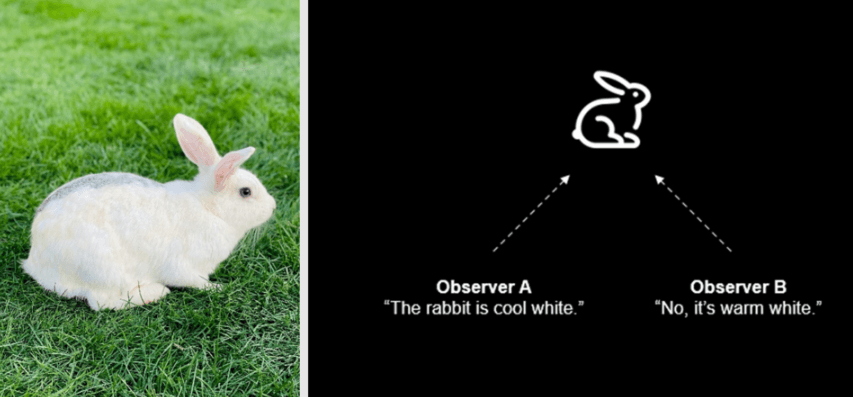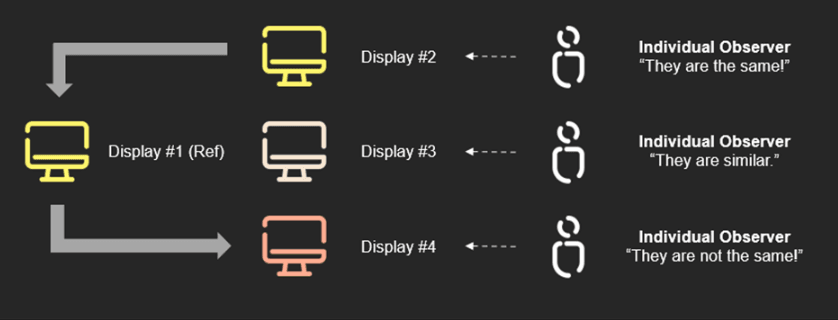
LG Display is striving to improve the accuracy of televisions and monitors to ensure that everyone perceives the colours they display in the same way as anyone else.
In a blog post, the company announced the creation of a new methodology for measuring “colour perception difference”, and it has now been accepted by the International Electrotechnical Commission as a new global standard.
What that means is that the IEC will use LG Display’s method to rate all consumer televisions and monitors, based on their level of colour perception.
LG explained that the new specification calculates and quantifies the difference between how seven standard colours are precisely measured by a machine under conditions similar to natural light, and how the same colours are seen by individual humans with the naked eye. The smaller the difference is, the more accurately a colour is perceived by different viewers.
Some might think that the slight difference in how individuals perceive colours on screen isn’t a problem, and it may not be when a family is sitting down to enjoy a late-night movie. But there are certainly many professional settings where accuracy of colour perception does matter, such as if you have a team of colour correction editors working on the same movie or TV show. In such cases, it’s better to ensure that each member of the editing team sees the same colour hues, so they can get the look and feel just right.
The way different individuals perceive a certain colour can vary, based on a range of factors such as their age, gender and genetics, and even their memory and their mood, LG Display says. Even things like the altitude, someone’s medical conditions and the medication they’re taking can have an impact on how they perceive colours.

Even on the best TVs, which are carefully crafted to ensure high colour accuracy, colours can be perceived very differently by individual users. For instance, even something simple like a white screen can look very different to two people, with one person seeing a slight yellow hue and another seeing a blue hue.

According to LG Display, the reason people see the same colour differently is due to the sensitivity of their photoreceptor cells, which vary from person to person and can be altered by some of the factors listed above.
This colour perception difference is what LG Display is attempting to overcome with its new standard, and – not surprisingly – it claims that its OLED televisions and monitors are among the best available in terms of minimising such differences.
LG Display explained that OLED displays generate their pictures using an organic, white light-emitting diode that more closely resembles natural light, making them more accurate. That’s why its OLED TVs have a remarkably low colour perception difference of under 10%, according to the new Colour Perception Difference Measurement Method standard now supported by the IEC.
Now, if we’re going to be honest, this relatively small difference in the way we perceive colours probably isn’t going to affect most people. The ability of a TV to meet LG Display’s new standard isn’t nearly as crucial as some of the other considerations weighed up by consumers, such as the actual display type, its support for HDR formats, its frame rate and so on.

That said, it’s still a useful tool for TV makers to ensure the colours on their displays are being reproduced with greater consistency, and the standard may well factor into the calculations of professional editors.
Whether or not LG’s next generation of televisions and monitors will benefit dramatically from adhering to this new standard remains to be seen. But it’s reassuring to know that display makers are constantly thinking outside of the box, and striving to ensure greater accuracy and enhance overall picture quality.
In any case we probably won’t have to wait that long to see if colour perception makes a real difference or not, as LG gets ready to unveil next year’s flagship G5 and C5 OLED TVs at the Consumer Electronics Show in January.